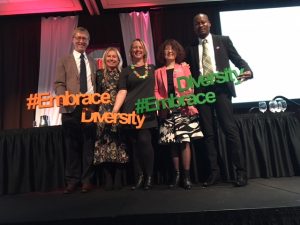In my June 2018 blog about the Joint Interdisciplinary Project I presented the background and first steps in the development of a 10-week full-time interdisciplinary project for second-year Master students at TU Delft, under the auspices of the 4TU.Centre for Engineering Education. From early September till mid November, 13 Dutch and foreign students spent their available time to this project. Highly motivated industrial experts of the international, engineering, design and project management consultancy Royal HaskoningDHV and the Dutch companies Huisman Equipment and Feadship Royal Dutch Shipyards coached and supervised the teams.
What did we learn and where will we go from here?
The framework of each project
The projects are a unique opportunity for cross-disciplinary and holistic work, beyond „engineering bricks“, in which students discover that interdisciplinary problems are often so complicated that it is impossible to know everything one needs to know to fully understand them. The projects welcome the students as equal participants in problem analysis and solving and knowledge construction. They are about the collaboration between students, industrial experts and academic staff of TU Delft, and aim for the company to find new commercial applications and business models that are inspired by advanced technologies.
Each project uses the same common aspects of innovative engineering and technology in an interdisciplinary mindset, in proper balance with non-engineering aspects such as societal relevance and impact, and ‘out-of-the-box’ business ‘in the niche’ development. The project outcomes are actionable.
Since the projects focus on the learning how to solve societal and technological challenges, they not only demand good engineering working knowledge but also a solid grounding in interdisciplinary and systems thinking, and both knowledge and mindsets of innovation and entrepreneurial behaviour.

The JIP project framework matches very well with my personal view on 21st Century Engineering Education (Source: adapted from Kamp (2016), Engineering Education in a Rapidly Changing World, 2nd ed. page 67)
Setting up interdisciplinary projects in a mono-disciplinary culture
It is not easy to develop an interdisciplinary educational project in an institute whose natural state is organised in disciplinary stovepipes, where academic staff is strongly socialised in disciplinary and professional groupings, and for whom educational change is no priority. There are a stunning number of procedures, regulations and curricular constraints that have to be met and apply in each Master programme in its own manner and wordings.
Most important is what I call the Symbolic Frame of a university of culture and traditions, “the way we do things around here”. In my workshop “Curricular Change is not Rocket Science” I deliver annually to educational leaders of the University of Leiden, Erasmus University Rotterdam and TU Delft, I emphasise that, to be successful in educational change, initiatives always have to fit within the culture. As an actor you shall have the courage to colour outside the lines and challenge the regulations and formal bodies.
The development of he JIP pilot would never have been successful if we had constrained ourselves to comply with all applicable limitations, regulations and boundaries. Also could the organising team of the Director of Education of Mechanical, Maritime and Materials Engineering (3mE), the Director of Education of Aerospace Engineering (me), and a JIP project coordinator only survive by their determination, perseverance and ultimate agility and resilience. The first pilot was a rough ride in a roller coaster in which not only the students learned a lot.
The students
In the pilot 13 second-year Master students took part in four mixed teams. They study aerospace engineering (2 off), mechanical engineering, (1), bio-mechanical engineering (1), geosciences (3), civil engineering (3), architecture and the built environment (1), technology, policy & management (2). Each team had members from at least three different disciplines, so that the need of crossing borders was incorporated as part of the project: innovative outcomes are often expected on the fringes of the discipline and result from expert thinking, taking different perspectives and complex communication.
The projects and their outcomes
We ran four projects that were challenging, not only from engineering point of view, but especially from the non-engineering perspective such as the wishes from the potential users and the impact on society. To make the projects manageable this first time we decided to cluster the projects around the broad theme of offshore, maritime, civil engineering and geosciences.
Coastal defense of the Netherlands for the future
For a 2-3 m sea-level rise in 2100, the current Deltaplan in the Netherlands is insufficient to provide safety and sufficient fresh water supply. The JIP project involves the technical feasibility and economic viability study and the societal impact assessment of a new coastline, the so-called Holland Dike, 20 km west from the current Dutch coastline. The dike is to be designed with a building-with-nature concept in mind, and combined with a new airport at sea, wind turbines on the dike, a tidal energy power plant, a blue energy plant, and an energy storage lake, all to add value.
Urban mining of earthquake affected structures for construction of new building projects
This project aims to develop a tool that facilitates urban mining of the earthquake affected structures in the province of Groningen in the Netherlands. There is a growing concern and awareness in society about the effect of construction activities on the environment. Coupled with the predicted shortage of raw materials this promotes the need for a process that facilitates urban mining. The project develops a tool that manages all building information available, verifies the data, includes a concept for transportation and optimises the use of building materials for new building projects in the region.
Near-shore Power Solution, connecting anchored ships to the electrical grid
The commercial shipping industry needs to move to renewable and alternative fuels to reduce the sector’s impact on the environment. A significant contribution could be land-based cold ironing, so-called shore power, in ports and while anchored close to the shore, providing electricity to ships at lower cost and less environmental impact than the massive onboard diesel generators. The project establishes a conceptual design for an internationally compatible Near-Shore Power System of an Unmanned Surface Vehicle using wireless charging, and an environmental and added value impact assessment. The case study takes the Port of Rotterdam (34,000 sea-going vessels and 133,000 inland vessels per year) as the reference location.
Feasibility study of Geothermal Heat in the Netherlands
This project investigates the feasibility of the transition from natural gas to geothermal heating in Dutch households, by assessing multiple parameters for different renewable heating options that differ per geographic location (heating efficiency, ease of implementation, cost efficiency, reliability, social acceptance, environmental impact and safety). The socio-technical analysis reveals that the transition is a complex multi-actor problem, not technological only. The study addresses the institutional aspects and policy level changes for the transition and reveals a severe misalignment in terms of financing and risk vis-a-vis technological development.

The Huisman Geothermal team members answering questions at the Final Review (private photo)
Flow of activities, deliverables and milestones
The project timeline has four milestones: the Kick-off 3 September 2018, the Problem Statement Review 14 September, the Mid-term Review 12 October, and the Final Review 9 November. Students present their progression and discuss open issues and discrepancies with the experts and critical student friends, and submit a written report.
All reviews, workshops and plenary sessions were kindly hosted by the Buccaneer in Delft, a beautifully restored artillery warehouse in the historic town centre of Delft that accommodates start-up accelerators in the energy, water and maritime sector. The students worked part-time at the university and part-time on the premises of the hosting company, who took them on field trips to the Deltaworks or the Groningen earthquake area to experience the real world where the project is about.
Meeting professionals
The interdisciplinary project work was scaffolded by five half-day lectures and workshops about Interdisciplinary Teamwork delivered by 4TU.CEE, Agile and Scrum by Royal HaskoningDHV, Value Creation by company Huisman Equipment, an online assessment “Back to Basics” by company Huisman Equipment, and Ethics and Engineering by TU Delft. These lectures and workshop introduced the students in interdisciplinary teamwork, working with Scrum, and developed a mindset of client thinking and value adding. The Back to Basics assessment remembered the students that making back-of-an-envelope calculations instead of immediately jumping to Excel spreadsheets or even more detailed simulation models, is key in estimating orders of magnitude and finding the course of action.
Student assessment
I had a strong preference to limit the student assessment to the minimum, i.e. assuring Master level project assignments, monitoring student engagement through peer reviews and feedback from the company supervisor(s), and reviewing the presentations and progress reports at the three milestones. In these interdisciplinary projects the students learn many thing, but is not easy to identify precisely what they have learnt where and when. The variety in regulations of the Maser programmes involved, the obsession of assessment at the university, and the different positions the project have within the individual Master curricula, forced us to make a more conscientious assessment approach of student performance.
We developed a 360-degree peer evaluation by the industrial supervisors, the student team itself, the other student teams as their critical friends, and the academic staff. Within the 4TU.Centre for Engineering Education we developed three sets of rubrics, one for each formal review. For each of the reviews we specified attainment targets for respectively Poor, Satisfactory and Excellent level, for each of the 12 facets: interdisciplinary teamwork, interdisciplinary problem analysis, scientific approach, systematic approach, engineering ethics, customer thinking, impactful innovation, vision on viability and operability, communication and presentation, use of multi-media, reports, and self-efficacy.
Out-of-comfort
All students were immersed in a new context and different environment. They had to think outside the boundaries of their own discipline and respect each other’s particular cultures. The complexity of the interdisciplinary projects required openness to other perspectives, seeing the bigger picture and an appreciation of each other’s qualities. They took them far out of their comfort zone, being bombarded with things they had never encountered before. The time pressure, the different expectations of the team members, the different ways of learning, the difficulty of balancing socio-economic aspects with the more familiar technological feasibility, the need for a holistic view, the discovery of who actually the customer of the project is, the limited depth of study that can be achieved when not all students master the fundamental knowledge of the key discipline the project is about, the need to take initiative and adopt a data-driven approach in which each choice is made on the basis of solid arguments, analysis or trustful data.
For some teams it was the unstructured nature of the problem, the lack of oversight due to the high complexity, the time-consuming discussions about the manageable scope for 10-week period, the need to take so many different perspectives to understand certain aspects of events or situations, or their search to the appropriate engineering approach to follow. For other teams it was the problem analysis that remained unresolved till the end of the project: “what exactly is the system you have tried to design? what are its limitations, what are its interfaces?” For many students it was an eyeopener that they had to set their own goals and take initiative and responsibility for their own learning.
The students considered seeing the bigger picture and perspective taking, and that teamwork is key to interdisciplinary understanding as the most valuable skills acquired in the projects. They also highly appreciated the insight they got in the professional employee’s mindset with its way of working in the professional engineering business that was so much different from the much more prepared and structured Master assignments at the university. They learnt that the world itself is the most effective teacher.
One front desk for impactful interdisciplinary projects
The students have been very enthusiast and told us the project was a unique experience to collaborate with company experts at different locations and change perspectives every time they worked with another discipline. Especially the balancing of technical analysis, research and design work with client thinking, economic viability and societal impact has been extremely challenging for all teams of engineering Master students only. For sure these aspects have to be maintained in future JIP project proposals.
 For next year the 4TU.Centre for Engineering Education will scale up of the JIP initiative and adapt the organisation and project structure to more themes (e.g. aerospace, mobility, robotics, ….) and a larger number of student teams that hopefully will cover all engineering disciplines and various nationalities and cultural backgrounds. Next year’s target is to run about 12 JIP projects with 50 students total. During the recent pilot we have already received many offers and requests for information from various branch organisations and Dutch and international companies in various sectors, the aerospace sector in particular. Companies, students, university staff, please read this as an invitation to join the JIP initiative, and contact us to show your interest?
For next year the 4TU.Centre for Engineering Education will scale up of the JIP initiative and adapt the organisation and project structure to more themes (e.g. aerospace, mobility, robotics, ….) and a larger number of student teams that hopefully will cover all engineering disciplines and various nationalities and cultural backgrounds. Next year’s target is to run about 12 JIP projects with 50 students total. During the recent pilot we have already received many offers and requests for information from various branch organisations and Dutch and international companies in various sectors, the aerospace sector in particular. Companies, students, university staff, please read this as an invitation to join the JIP initiative, and contact us to show your interest?
We will also join forces with an already existing In-house Design Team project at Industrial Design Engineering (so far working with industrial design engineering students only), and support the start up of “JIP Global” with impactful JIP-type projects in cooperation with universities and local citizens in Ghana. We will also connect to the Honours Academy University Leiden. This academy will co-create for the very first time projects with students and staff from the Leiden Faculties of Humanities and of Social and Behavioural Sciences and from the TU Delft engineering faculties, and business and companies.
Thus we aim to develop one front desk for interdisciplinary impactful Master projects.
Spot on the horizon
The spot on the horizon of the next couple of years is twofold:
- developing the JIP project into an interdisciplinary collaborative thesis project of 30 to 45 credit points, that will be made available as an option to any Master student of TU Delft, in future possibly also to students of University Leiden or Erasmus University Rotterdam to better include humanities and social sciences aspects
- expanding the interdisciplinary project to 4TU level.
The nearest point on the horizon however is the evaluation of the pilot and the adaptation of the organisation into project clusters that link to specific themes. Since success does not depend on regulations, institutes or organisational structures but on people, getting the commitment of more academic staff and a broader range of company supervisors has the highest importance.
We will not hesitate to ask the student associations again as an important platform to enthuse the Master students to enrol in this unique interdisciplinary and intercultural opportunity in September 2019, where each student will learn knowledge, skills and mindsets in a 10-week period full-time, that cannot be taught within the cocoon of the university.
Acknowledgements
I would like to thank all colleagues and students for their creativity, inspiration, time and patience that have enabled the co-creation of the first JIP pilot project.
Special thanks to the amazing JIP project coordinator and persistant go-getter Birgit de Bruin, my direct companion Hans Hellendoorn (Director of Education 3mE, Delft), the company supervisors Koen van Viegen (Royal HaskoningDHV), Remco van Ee and Eric Romeijn (Huisman Equipment) and Giedo Loeff (Feadship Royal Dutch Shipyards), the workshop leaders Renate Klaassen, Pieter Schreurs and Filippo Santoni de Sio. I also thank Micaela dos Ramos, president of the Royal Netherlands Society for Engineers KIVI, for her enthusiast input during the preparations and valuable feedback at the reviews.
I would also like to give a special thanks to the Buccaneer staff for their thoughts and ideas in the initiation phase and their great hospitality during all plenary JIP events.
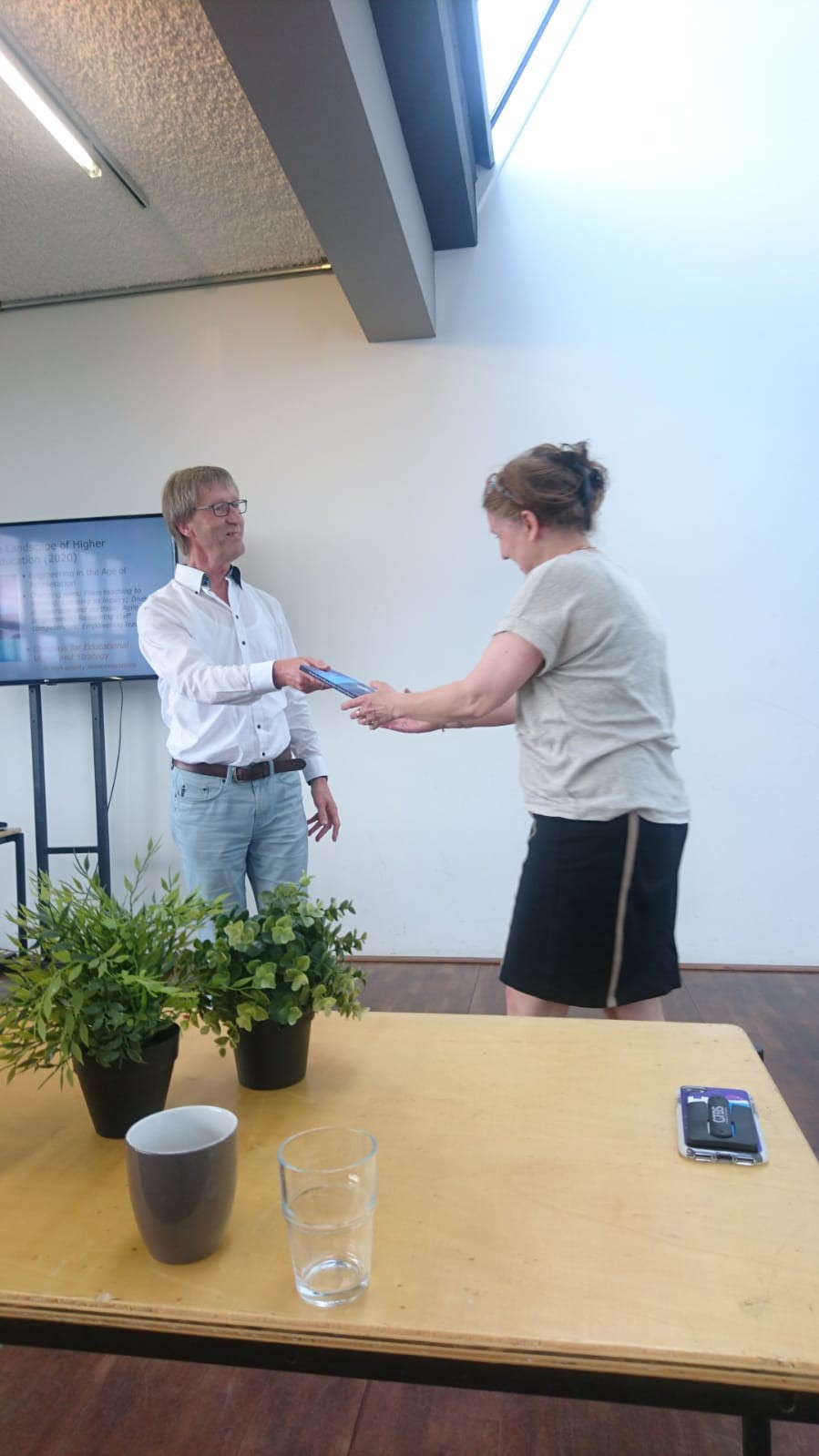
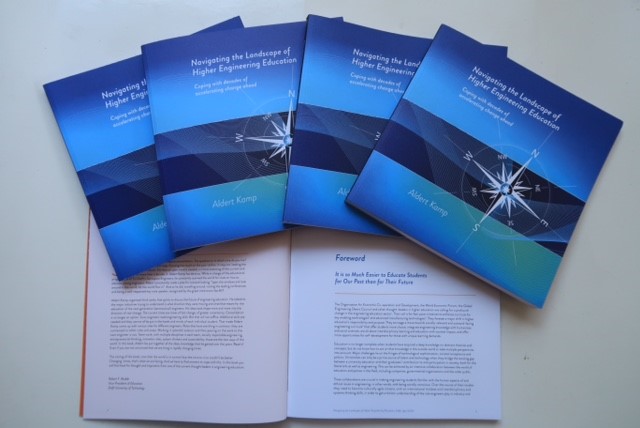






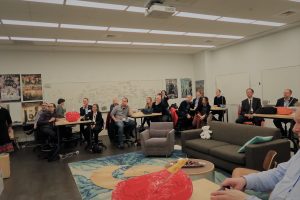
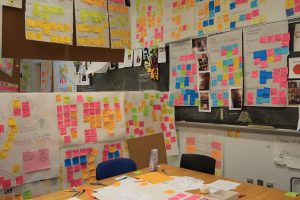
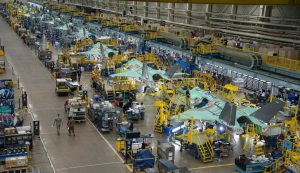
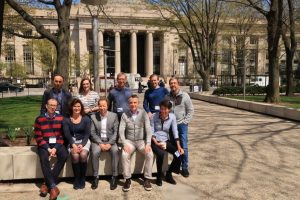
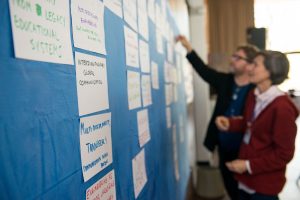
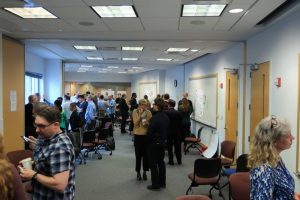
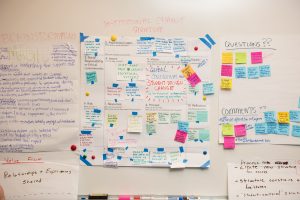
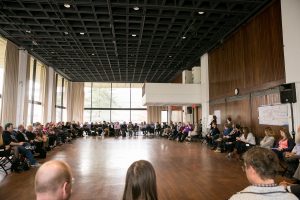
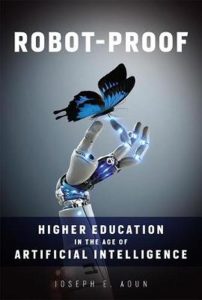
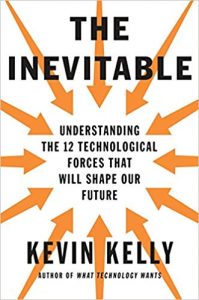
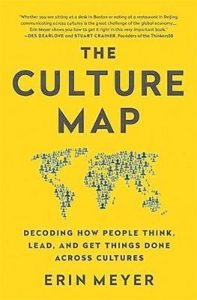

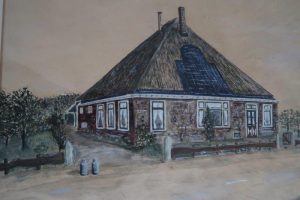
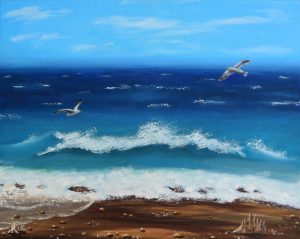


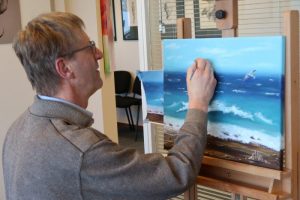


 For next year the 4TU.Centre for Engineering Education will scale up of the JIP initiative and adapt the organisation and project structure to more themes (e.g. aerospace, mobility, robotics, ….) and a larger number of student teams that hopefully will cover all engineering disciplines and various nationalities and cultural backgrounds. Next year’s target is to run about 12 JIP projects with 50 students total. During the recent pilot we have already received many offers and requests for information from various branch organisations and Dutch and international companies in various sectors, the aerospace sector in particular. Companies, students, university staff, please read this as an invitation to join the JIP initiative, and contact us to show your interest?
For next year the 4TU.Centre for Engineering Education will scale up of the JIP initiative and adapt the organisation and project structure to more themes (e.g. aerospace, mobility, robotics, ….) and a larger number of student teams that hopefully will cover all engineering disciplines and various nationalities and cultural backgrounds. Next year’s target is to run about 12 JIP projects with 50 students total. During the recent pilot we have already received many offers and requests for information from various branch organisations and Dutch and international companies in various sectors, the aerospace sector in particular. Companies, students, university staff, please read this as an invitation to join the JIP initiative, and contact us to show your interest?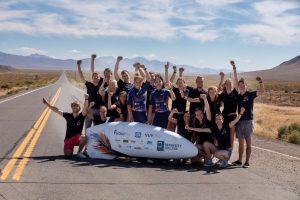

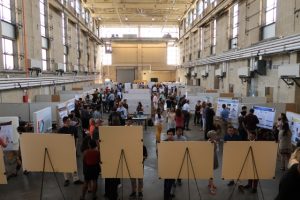
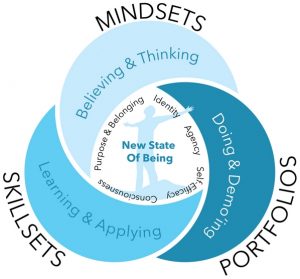


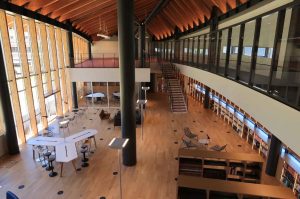

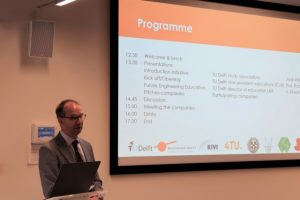


 What kind of university TU Delft strives to be? What changes does TU Delft foresee in its engineering education for the next six years? In January 2018 TU Delft published its updated
What kind of university TU Delft strives to be? What changes does TU Delft foresee in its engineering education for the next six years? In January 2018 TU Delft published its updated 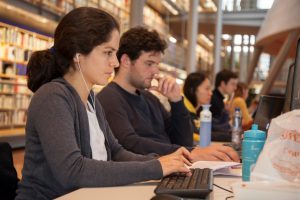
 My vision ∇ p.45 reads “Student engagement that is currently achieved by following standard curricula, will soon change into more personalised learning, with individual learning plans that ask for high degrees of flexibility.”
My vision ∇ p.45 reads “Student engagement that is currently achieved by following standard curricula, will soon change into more personalised learning, with individual learning plans that ask for high degrees of flexibility.” TU Delft faces interesting challenges to remain an active and engaged change-maker in the landscape of 21st century higher engineering education. The university has always strongly focused on equipping students with deep discipline-based knowledge and left the development of the durable and wider professional skills to the early years of the professional career. And that won’t change. But future engineer business increasingly needs talents that combine deep disciplinary expertise with social, political, and economic capabilities, who are able to connect the dots, think holistically, and are culturally agile.
TU Delft faces interesting challenges to remain an active and engaged change-maker in the landscape of 21st century higher engineering education. The university has always strongly focused on equipping students with deep discipline-based knowledge and left the development of the durable and wider professional skills to the early years of the professional career. And that won’t change. But future engineer business increasingly needs talents that combine deep disciplinary expertise with social, political, and economic capabilities, who are able to connect the dots, think holistically, and are culturally agile. In my vision (∇ pp. 59-63) the three cornerstones for future engineering programmes are Innovation, Employability and Community. The first two are anchor points for future curricular structures and subject matter.
In my vision (∇ pp. 59-63) the three cornerstones for future engineering programmes are Innovation, Employability and Community. The first two are anchor points for future curricular structures and subject matter.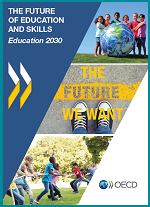 If you think that the above quote comes from our recent university documents, you are mistaken. It is from the OECD document “The future of education and skills- education 2030- the future we want” – a position paper by the OECD (based on first investigations of their project). If you think that this paper relates to higher education, you are mistaken – it is meant for education from pre-school to higher education!
If you think that the above quote comes from our recent university documents, you are mistaken. It is from the OECD document “The future of education and skills- education 2030- the future we want” – a position paper by the OECD (based on first investigations of their project). If you think that this paper relates to higher education, you are mistaken – it is meant for education from pre-school to higher education! What caught my attention most were his elaborations on knowledge and competence development. He predicts that “disciplinary knowledge will continue to be important. It is the raw material from which new knowledge is developed, together with the capacity to think across the boundaries of disciplines and “connect the dots”.
What caught my attention most were his elaborations on knowledge and competence development. He predicts that “disciplinary knowledge will continue to be important. It is the raw material from which new knowledge is developed, together with the capacity to think across the boundaries of disciplines and “connect the dots”. This post has been written by my colleague Birgit Pepin, 4TU.CEE leader of TU Eindhoven, and was published on the weblog of 4TU.CEE (
This post has been written by my colleague Birgit Pepin, 4TU.CEE leader of TU Eindhoven, and was published on the weblog of 4TU.CEE (
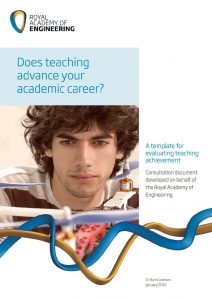 In many universities management and staff wish to restore the balance between education and research in appraisal cycles and career paths, but few see how this can be achieved. The main problem is, Van der Veen said in his introduction, that most people who have to evaluate or approve professorships in education, are experts in disciplinary research themselves, don’t understand or appreciate education as such to the same level, and thus operate in a slow-death mode.
In many universities management and staff wish to restore the balance between education and research in appraisal cycles and career paths, but few see how this can be achieved. The main problem is, Van der Veen said in his introduction, that most people who have to evaluate or approve professorships in education, are experts in disciplinary research themselves, don’t understand or appreciate education as such to the same level, and thus operate in a slow-death mode.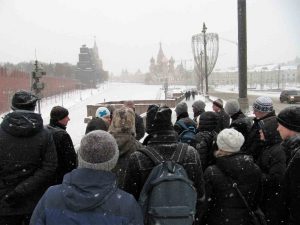
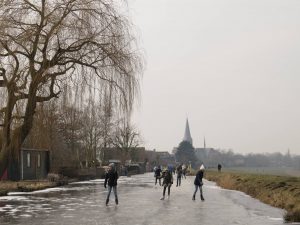


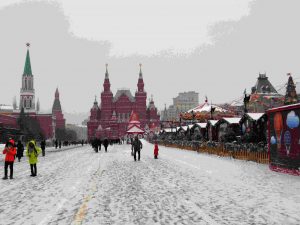
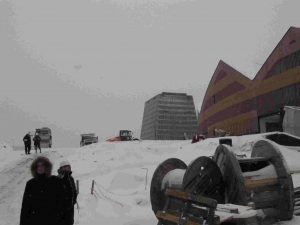
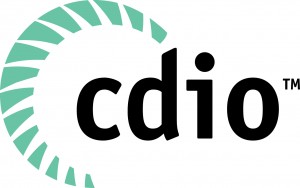 Malmqvist does not believe that any of the principles is particularly superior. Rather, he believes it is imperative to implement them as a set in its entirety. “It’s the set that is important. When we have worked with a set of standards, we have gotten a systematic approach to designing our programmes, and that takes into consideration many things. So in many cases it’s really working with the whole set, which is the key point. All of them are important in their own right, but they’re even stronger as a combined set,” he said.
Malmqvist does not believe that any of the principles is particularly superior. Rather, he believes it is imperative to implement them as a set in its entirety. “It’s the set that is important. When we have worked with a set of standards, we have gotten a systematic approach to designing our programmes, and that takes into consideration many things. So in many cases it’s really working with the whole set, which is the key point. All of them are important in their own right, but they’re even stronger as a combined set,” he said.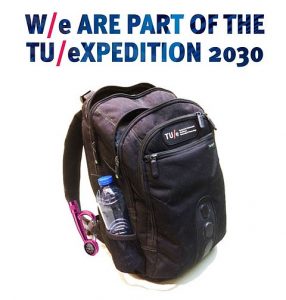 In 2030 all students in the classroom will be digital natives. The digitalisation of the learning environment and study materials enables the students to create their own playlists and compose personalised study programmes in line with the individual capacity, interest and ambition. From day one it makes the students responsible for their learning and makes them more aware that education is a preparation for life. TU/e foresees a transformation of the existing rigid curricular Bachelor and Master structures in highly flexible curricula in which each student has a high degree of freedom to build his or her study programme from separate modules, micro-credentials and nano degrees. These originate from an unbundling of the existing curricula in Eindhoven or can be taken from (qualified) programmes from other universities. Programme certificates will guarantee the quality of the individual degree programme. It will require an extensive upskilling of the teaching staff, new didactic and pedagogic learning systems and software that supports the teachers in tracking of individual competence development, and the students in planning and control of study activities. It will also require “flip-thinking” to turn traditional didactics, rules and regulations into enablers for personalised study programmes.
In 2030 all students in the classroom will be digital natives. The digitalisation of the learning environment and study materials enables the students to create their own playlists and compose personalised study programmes in line with the individual capacity, interest and ambition. From day one it makes the students responsible for their learning and makes them more aware that education is a preparation for life. TU/e foresees a transformation of the existing rigid curricular Bachelor and Master structures in highly flexible curricula in which each student has a high degree of freedom to build his or her study programme from separate modules, micro-credentials and nano degrees. These originate from an unbundling of the existing curricula in Eindhoven or can be taken from (qualified) programmes from other universities. Programme certificates will guarantee the quality of the individual degree programme. It will require an extensive upskilling of the teaching staff, new didactic and pedagogic learning systems and software that supports the teachers in tracking of individual competence development, and the students in planning and control of study activities. It will also require “flip-thinking” to turn traditional didactics, rules and regulations into enablers for personalised study programmes.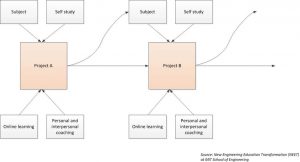
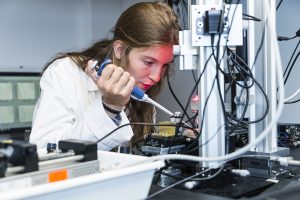
 aculty we try to mitigate such relegation by assigning at least three female students to a team of eight or ten students, or no women at all, which is not the ideal world either. This also takes advantage of a conclusion in the report by
aculty we try to mitigate such relegation by assigning at least three female students to a team of eight or ten students, or no women at all, which is not the ideal world either. This also takes advantage of a conclusion in the report by 